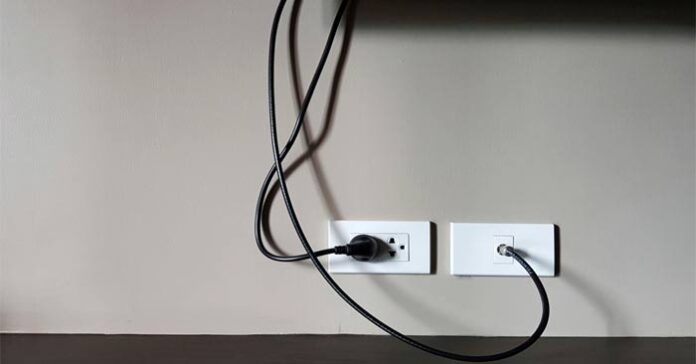You can hide power cords, coaxial cables, and any other wires in your home. Here are some simple ways to conceal wires and cables.

While wireless devices are prevalent, dealing with cords and cables remains a headache for most. You can hide wires or electrical cables inside the walls of your own home, but if you’re renting or simply don’t want to drill or cut into the walls, that’s not ideal. In fact, there are much easier ways to conceal them.
Ways to Hide or Tidy Up Electrical Wires and Cables in the House
Behind Furniture
One of the easiest ways to hide cable wires is to clip them behind conveniently placed furniture. Adhesive clips will stick to the legs and backs of tables and stands, securing all those wires in place. If done skillfully, you can “invisibilize” those wires without touching the walls, and the clips can be removed at any time if you change the layout or move to a new place.
You can also take advantage of a key piece of furniture: the sofa or couch. Install a shallow shelf behind the sofa (flush with the top of the back) or buy a narrow console table that fits snugly behind it, allowing you to attach wires underneath to perfectly hide them. Plus, it adds a bit of extra storage space to your home.
Cable Boxes
If your cables only bother you when they turn into a mess in one spot (like when they have to go on the floor to connect to your TV or computer), cable management boxes are a decorative and functional solution. Users don’t have to fiddle with organizing them anymore. You can find them in various styles. All help you hide the mess of wires out of sight without having to do any DIY work.

Cable Sleeves
If you need to run electrical wires a fair distance across the room, cable sleeves can come in handy. With them, you don’t need to drill into walls to conceal wires; just paint the sleeves to blend them into the background; after painting, these cable sleeves won’t draw attention.
If you already have baseboards in the room, you can have quarter-round-shaped channels attached right onto the existing trim to create a seamless design.
Wall Panels
A slightly more complex solution for tidying up wires and cables in the house is to add wall panels to hide wires and electrical cables:
Wainscoting: A classic look, installing wainscoting isn’t too difficult as long as you’re patient with measuring and cutting. No need to open up the walls, but some drilling, nailing, and sawing skills are required. The key is to offset the panels about an inch from the wall to allow space for wires to run behind, then cover the gap with molding.
Decorative Wall Panels: You can also add a decorative wall by using panels behind your TV or desk. Offset it by about an inch from the wall and run wires behind it for a neat, seamless design, adding a feature to the room. The panels can mimic wood, brick, stone, or simply be a color accent in a neutral room.

Decorative Solutions
Finally, the easiest, cheapest, and least invasive way to hide electrical wires is to tuck them behind things you already have. For example, a row of books or potted plants can camouflage a few bundles of wires. Anything that can be placed on a shelf in a reasonably arranged fashion can hide some electrical wires without drilling or rearranging furniture.





































